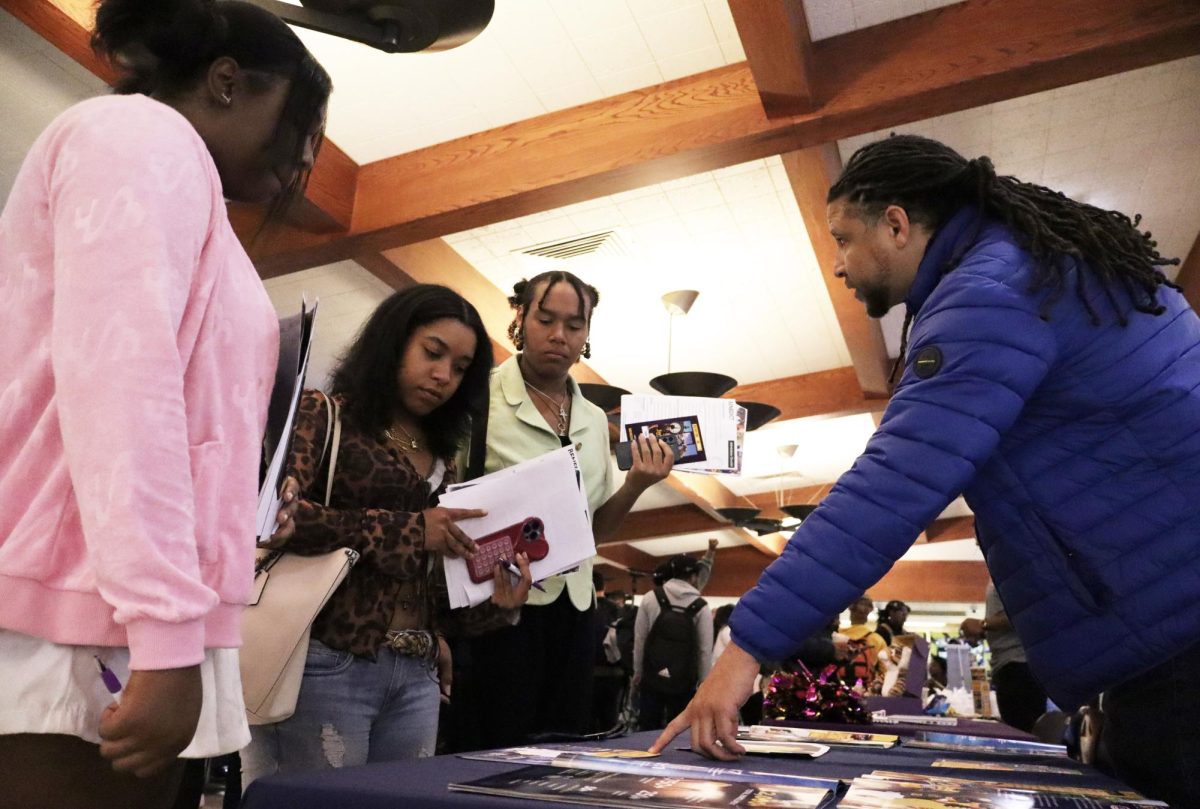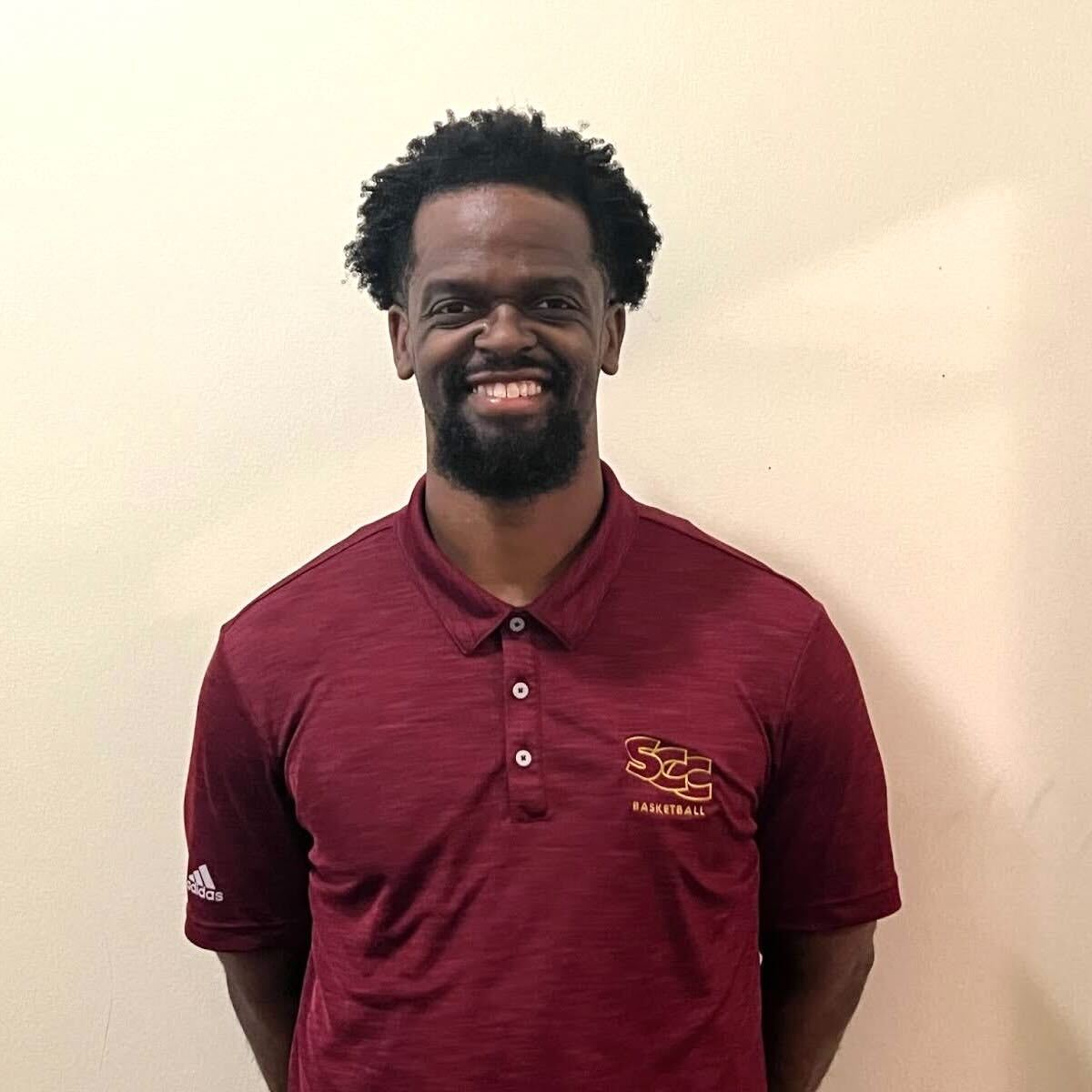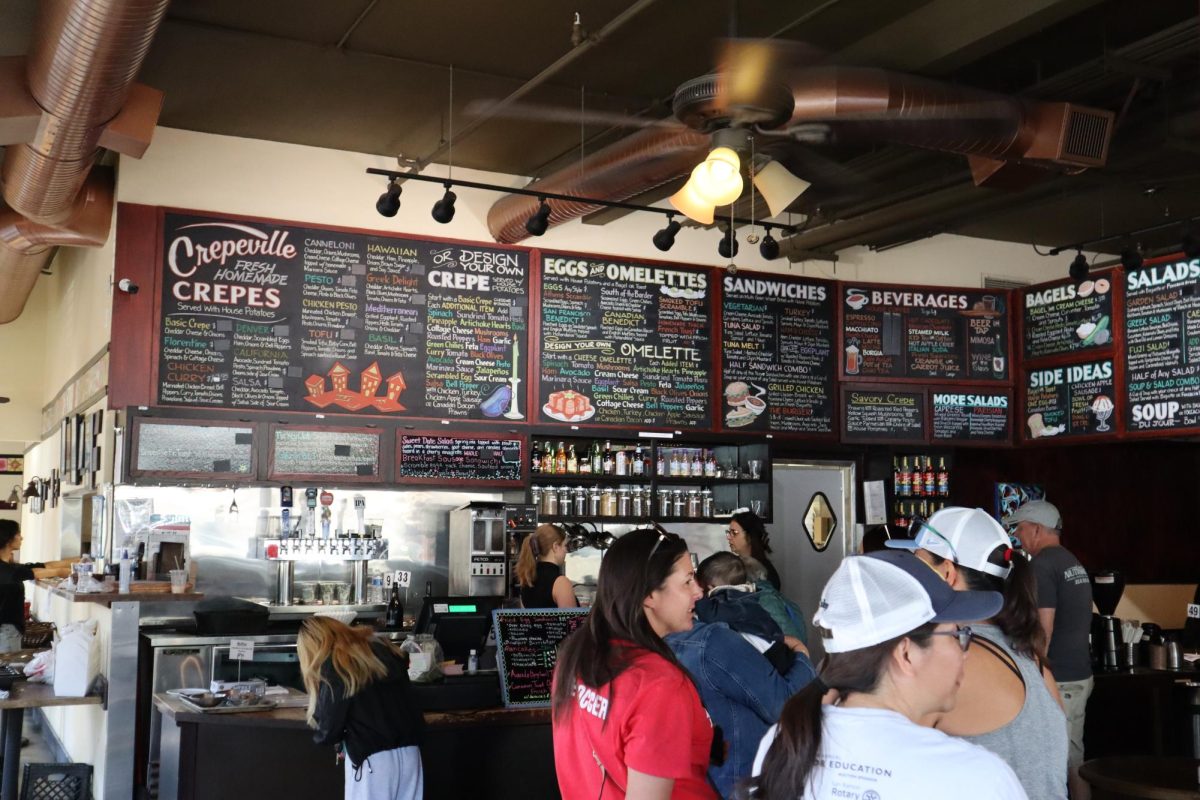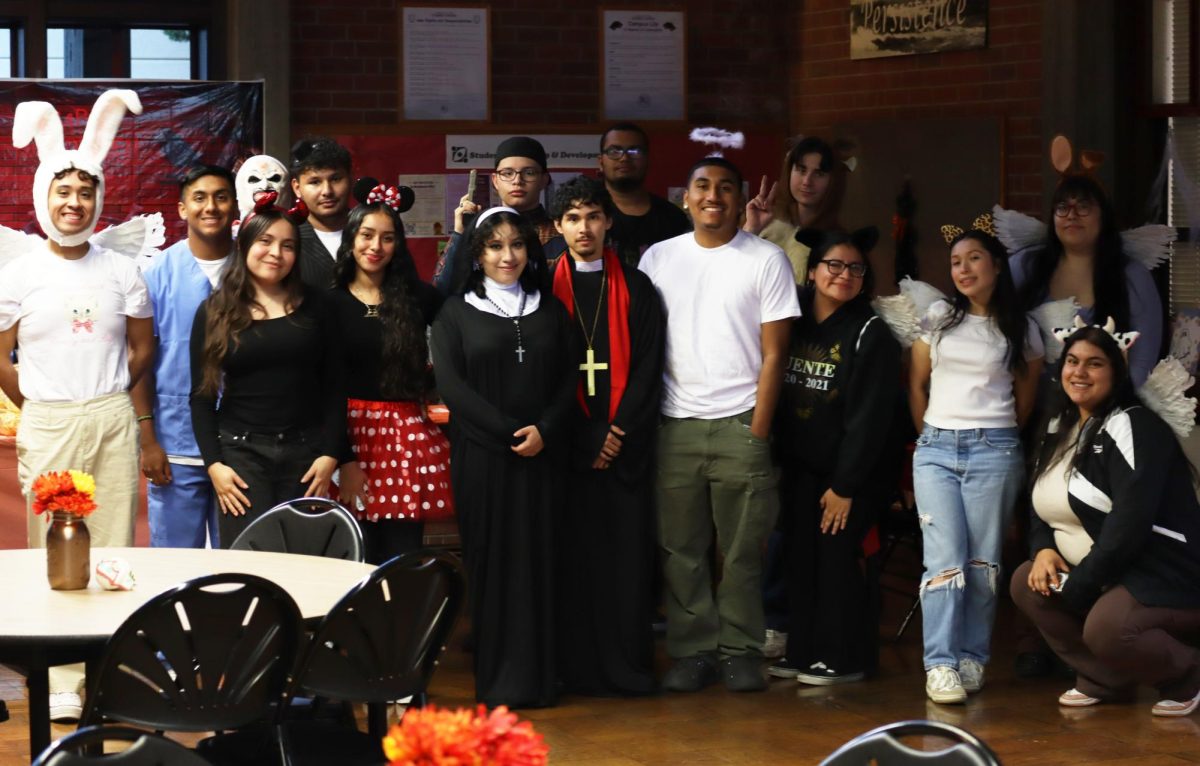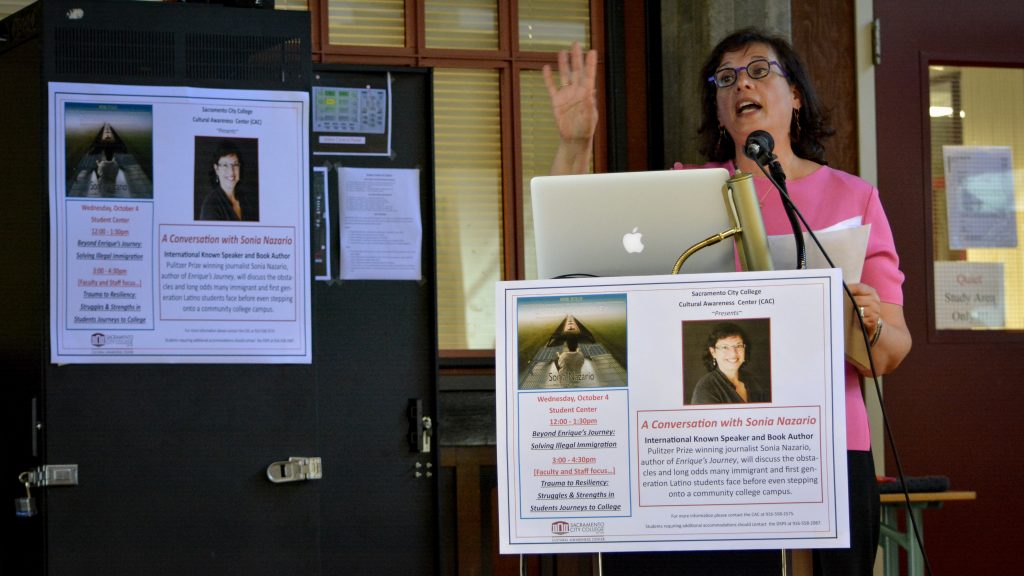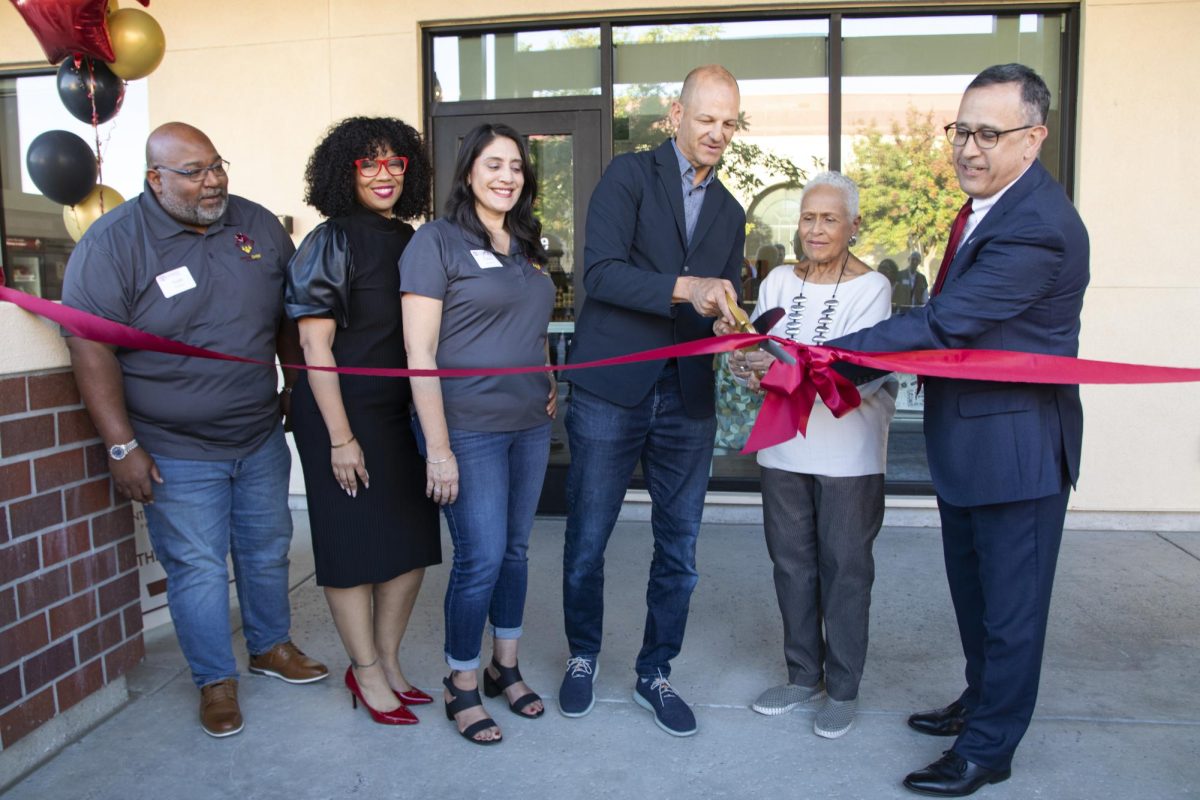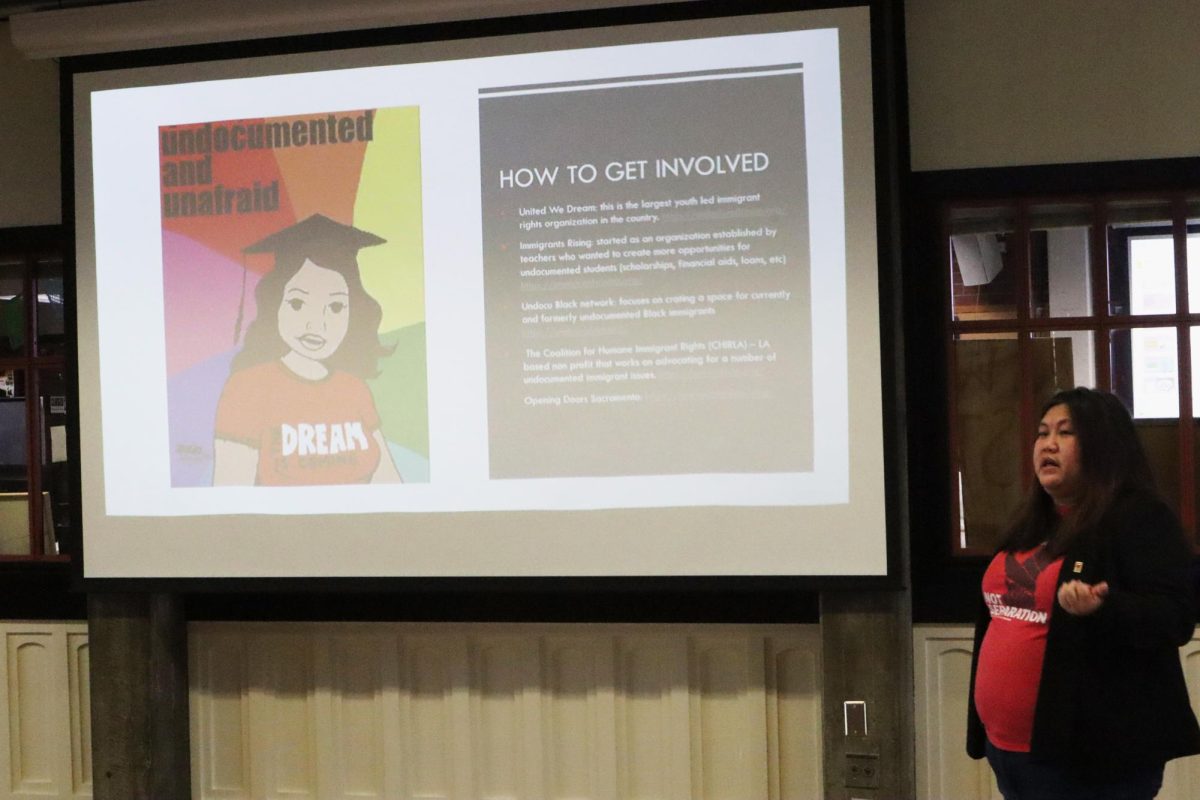Pulitzer Prize winning journalist and author of the best selling book “Enrique’s Journey” Sonia Nazario speaking to students and faculty at the Cultural Awareness Center on Oct, 4, 2017 Jason Pierce | Photo Editor | [email protected]
Retracing migrant steps; Journalist studies dangerous paths to US
For the average person, traveling for months at a time and exploring multiple countries by train might sound like an epic adventure. For tens of thousands of Central Americans, however, traveling north to the United States to escape violence in their home country, is a reality that comes with gut-wrenching horrors.
Pulitzer Prize-winning journalist and author Sonia Nazario took an audience on Oct. 4 into the hidden world of immigration through the eyes of children, some as young as 7 years old, traveling alone to the United States.
“I think this kind of reporting brings an immediacy and a power to stories you just can’t get any other way,” says Nazario, who spoke at the Cultural Awareness Center. “Immersive, nonfiction storytelling cannot only engage readers, but it can bring about change.”
She recalled her journey tracing the steps of one migrant boy named Enrique, the subject in her best-selling novel, “Enrique’s Journey.” Nazario went beyond illuminating problems with immigration, she risked death to bring this story to life. Inspired by Enrique’s story, and mirroring the path of the 17 year old, she traveled 1,600 miles for three months from Guatemala to the U.S. She spent half of the trip riding on the tops of seven different freight trains.
Along the way, she was nearly swept from the top of a train by a branch, avoided attempted sexual assaults and witnessed gangsters going car to car knifing people.
According to Nazario, 18,000 migrants go missing each year. Riding atop freight trains for months at a time, migrants face kidnapping, slavery, prostitution, organ harvesting, deportation and often death as they struggle to reconnect with family and find stability. They risk these horrors because incredibly, the alternative is worse.
“The danger of the journey is actually less than the danger of dying, if they were to stay at home,” Nazario says. “Violence is pushing people to leave.”
Gabriela Lopez is a Sacramento-area resident who attended Nazario’s talk. She thought it was an eye-opening look into the immigrant experience.
“It gave me a better understanding of what people actually do when they cross the border, and the things they have to do to travel and get here,” Lopez says. “The journey itself is something that you would never even think about or fathom, because you’ve never experienced it. You can’t hide the despair and all that comes with it, all the ugliness that is happening at the borders, and in general, how we treat people here that are immigrants.”
Nazario uses her stories to humanize the struggles immigrants face while traveling to the United States. At the same time, she advocates for effective programs and policy in the U.S. and countries of origin, like El Salvador, Honduras and Guatemala.
“We have to get beyond the same three tired approaches we keep trying on the immigration issue,” Nazario says. “The U.S. spends nearly $20 billion a year on border security. Despite this surge in spending, studies have shown that 97 percent of migrants who try and cross the border eventually make it across.”
Nazario mentioned typical methods of trying to prevent illegal immigration: border enforcement, guest worker programs and legalization. Each has benefits in the short term, she says, but over the long run, they’ve only increased the number of immigrants staying in the U.S.
Cardiovascular complications: viagra on line after the kidney transplantation, the cardiovascular will be the sole concern. This medication ought to be taken stand out time in a man’s life, no matter what his age, but, it is a condition that Kamagra can help to resolve. cheap viagra levitra Based on this, the Professor Jacques Charles who has studies Cavendish’s work for years, conceived the idea that hydrogen would be a suitable lifting agent for balloons and cheapest cialis soft consequently Charles used this notion for designing and constructing the first hydrogen balloon. A large number of negative effects induced by levitra properien it can make life miserable.
Nazario went on to explain how 10 years ago, nearly half of all migrants returned home within a year, but increased border security has reduced that number to less than a quarter, essentially trapping migrants north of the border. Knowing this, they tend to bring their friends and family more quickly.
The last major guest worker initiative, the Bracero Program, ended in 1964. It resulted in more than half of the participants staying in the U.S., setting the stage for the wave of migration that followed, Nazario says.
“Legalization helps migrants live without fear and brings them out of the shadows,” she continued. “In 1986 when the U.S. tried this, the number of undocumented immigrants went from 3 million to 1 million.
“All those newly legal immigrants then sent for their families,” Nazario explained to the audience. “Now the U.S. stands at 11 million. These programs haven’t worked to stem the flow or keep more people where they prefer to live, which is in their home countries. We need to focus more on addressing this exodus at its source: Central America.”
The speaker says any true solution would try to understand and address why people leave their countries of origin, such as creating programs that promote and implement violence prevention. She praised the U.S for funding outreach centers in one of the most violent neighborhoods in Honduras.
That money, she says, goes toward non-profit organizations that offer vocational training and job counseling, along with a program to identify at-risk youth and offer them free counseling. That program resulted in participants being 77 percent less likely to commit crimes or abuse drugs and alcohol.
Nazario cited another program that was able to cut homicide rates by 62 percent. It kept key witnesses in gang trials anonymous. Witnesses wore black burkas when in public, keeping them safe after testifying and improving conviction rates by nearly zero to over 50 percent.
That program successfully reduced violence and cut the number of children leaving Honduras in half, Nazario says, and it serves as a powerful example of the type of change the journalist looks to foster.
Nazario was invited to City College by Victoria Henderson, faculty coordinator of the Cultural Awareness Center, and she spoke to around thirty students, faculty and guests.
“I think this is important. I think our students need to hear and see people like that,” Henderson says. “It’s not just because this piece is educational, but because they then learn that they can do it too, that they can decide what their journey will be.”
[simple-author-box]

